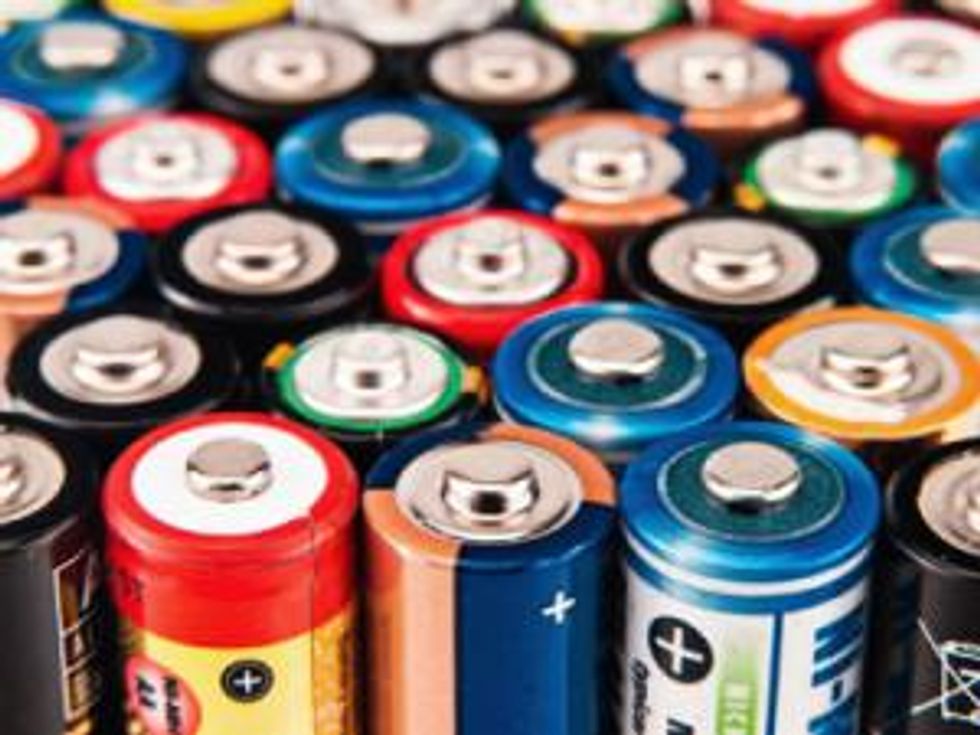Chris Hilliard of MagPower Systems Talks Innovative Battery Technologies
Magnesium Investing News spoke with Chris Hilliard, chairman and managing director of MagPower Systems. Hilliard explained MagPower’s magnesium-air fuel cell battery technology and talked about what might be next for the company.
MagPower has certainly generated interest so far, winning a HKEIA Gold Award in November 2013 in the Industrial Electronics category.
In the interview below, MagPower’s chairman and managing director, Chris Hilliard, gives Magnesium Investing News (MIN) some insight into the company and talks about why MagPower has chosen to focus on magnesium. Currently MagPower is privately held, but Hilliard discusses what going public would look like for the company and whether that is a distinct possibility.
MIN: To start off, I don’t think we’ve covered MagPower extensively on our network before. Could you tell our readers a little bit more about your company?
CH: MagPower is a private company that is registered in British Columbia. It’s 15 years old, and we have just over 200 shareholders, which is a little unusual for a private company, but that’s just the way things have played out. Over the course of that time frame, the company has spent about $7.5 million in total. For the most part, all of that money has been used for research and development, and that research and development has been focused entirely on the magnesium cell. We’ve not looked at other technologies, we’ve been solely focused on that product.
Specifically, we’ve focused on using magnesium with a saltwater electrolyte. There are numerous other electrolytes, and certainly in the zinc air space and to some extent in aluminum air, people use more exotic electrolytes that can generate more power. Having said that, our focus has been on producing a device that is environmentally benign, non-toxic and not dangerous for us, so the compromise is using the saltwater electrolyte. That allows us to create a product that is safe in anyone’s hands.
To that end, we’ve taken that magnesium saltwater combination, which has been known for about 60 or 70 years, and improved both the power output and the efficiency, efficiency being essentially how long it lasts. In terms of power output, we’ve take a traditional cell that would have produced say 1 volt, and that cell is now producing 1.23 volts. It’s about a 23-percent increase in output that we’ve achieved.
MIN: Interesting. So how exactly does your battery work?
CH: Well, you have a magnesium anode, a saltwater electrolyte and a gas diffusion cathode, or an air cathode. That air cathode holds the saltwater electrolyte inside the cell, but allows oxygen to enter the cell. The salt is inside the water for conductivity. There is an electrochemical reaction that occurs at the anode, and that releases electrons, which are then gathered by the cathode to produce electricity.
MIN: Just like a regular battery
CH: Yes, just like a regular battery.
MIN: Why magnesium? What are the advantages and disadvantages of using magnesium in batteries as compared with aluminum, zinc or lithium?
CH: Specifically, in terms of the advantages and disadvantages, when you look at magnesium, one of the big things is that you have two covalent electrons, so stripping the magnesium of those electrons and creating electron flow, or electricity, is quite easy relative to some other materials that are used in batteries.
Another big advantage over the past few years is that both the availability, and relatedly, the price, of magnesium have improved. The magnesium price as compared to what it was roughly 10 years ago is considerably lower. China’s magnesium production has grown in leaps and bounds over the past few years as magnesium is used in more and more structural applications, and more and more research is focused on magnesium batteries. This means that the demand has increased, but the supply has increased much more dramatically, meaning a lower price.
There are other considerations, but for us, the choice again came back to: which one of those three can we develop that has an environmentally benign or non-toxic footprint? That came down to the magnesium saltwater system.
As for lithium, lithium suffers from a couple of issues, which I think are worth mentioning. Clearly, lithium has become the battery of choice over the last 20 or 25 years. It powers our phones, powers our computers and powers cars, and it has tremendous power output. It’s really quite a great battery in some senses, but it has issues.
It has disposal issues because lithium, and relatedly, the cobalt that’s inside it, are potentially toxic. So when people simply throw them out, as we do with the button batteries that are in our devices, they’re depositing toxic chemicals into the landfill. Similarly, lithium has what is called “thermal runaway.” If you Google pictures of Tesla and fire, there will be videos of Teslas burning on the side of the road. You can do the same with Boeing.
Clearly they’ve solved that issue for the most part. In terms of percentages, the incidents are statistically irrelevant, but they do happen, and we don’t have those issues. The magnesium system might get to 70 degrees — people will ask about magnesium catching fire, and indeed it does, and when it does, it burns white hot, but it has to be at 650 degrees in order to catch fire.
MIN: Getting back to the business side of things, your website states that you focus on research and design and plan to seek partnerships with external manufacturing partners. Have you had any interest so far?
CH: Absolutely. We’re in the midst of negotiations right now with a group in Colombia. They are a battery company, and they produce most of their batteries and products related to batteries in China, but they are nonetheless based in Colombia. They’re pretty keen. We have interest out of Australia from a distributor who would look for Chinese manufacturing as well, but would want to distribute products in the Australian environment.
We’re also very, very busy with a number of different discussions with people in China. The Chinese very clearly have an interest in all things to do with energy, and their focus is, no matter what our premier says, not entirely about liquefied natural gas. It’s also focused on nuclear, and on all sorts of battery technologies.
We’re dealing with, I’ll say at this point, three different organizations in China that would be in this case both manufacturers and distributors of products related to our technology.
MIN: And at the moment, you are privately held. Would going public ever be a possibility? What would that look like and what would need to happen in order for MagPower to make that change?
CH: So we actually entered into an agreement last year to roll this company into a public company, into a capital pooled corporation. Ultimately we backed away from them. We didn’t feel that we had all the value points that we really wanted to be able to maximize that public opportunity.
I would argue that there are really three possibilities on a go-forward basis for this company. In the first scenario, we could continue to be a private company and simply license out the technology, earn revenues based on that and distribute dividends to our shareholders on that basis.
Secondly, we could enter into a public transaction once I’m convinced that we’ve got a direct route to sufficient revenues to support a public listing. My background is in public markets, so I understand it well, and I’m not prepared to take us there until we’re absolutely ready. But it would be an easy thing to accomplish.
We have ongoing discussions, and one of the elements to a potential public offering would be whether it makes sense. For example, as we’re speaking I’ve just received an email from a fellow that is at one of the investment dealers who is interested, but they’re only interested if we become a public company. So the ask then for me is really simple: raise us the capital that we need to take this thing forward, quickly, and we’ll do it through a public vehicle.
The costs of being public are between $100,000 and $150,000 a year in additional accounting and legal costs, plus the time that it takes to manage a public story in addition to managing the business, and that’s a big deal. So we’re very cognizant of that, but it’s entirely possible.
The third option would be if, for example, one of the bigger battery companies finally looks at us and says, “well, you’ve got something that’s actually quite interesting, you’re starting to make some commercial headway. We’ll buy you and make sure that if there’s anything ever done with magnesium-air batteries that we do it.”
But I think any of those three possibilities are quite real. I would think it’s likely, if there’s going to be a public listing, that it would be within 12 months.
MIN: That all sounds very exciting. Thank you for speaking to us about what MagPower is all about and what your company is up to.
CH: Thank you.
Securities Disclosure: I, Teresa Matich, hold no investment interest in any companies mentioned.
Editorial Disclosure: Interviews conducted by the Investing News Network are edited for clarity. The Investing News Network does not guarantee the accuracy or thoroughness of the information reported. The opinions expressed in these interviews do not reflect the opinions of the Investing News Network and do not constitute investment advice. All readers are encouraged to perform their own due diligence.

